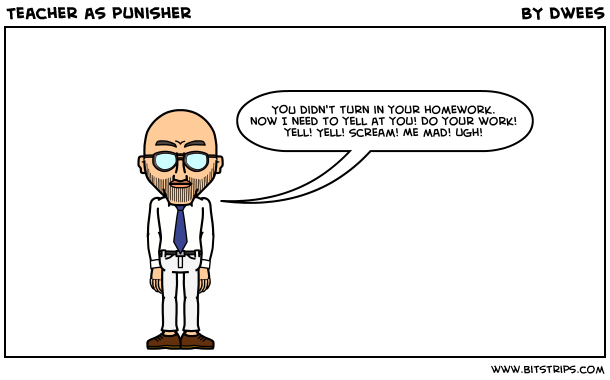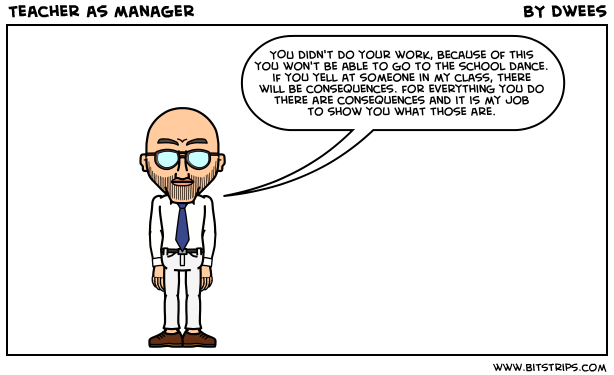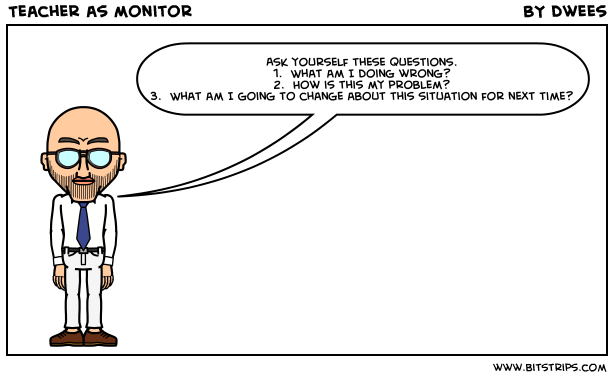Our school uses a school-wide behaviour management system called "Real Restitution". It’s not really about behaviour management though, that’s not the best word for it. Think of it as a constructivist approach to behaviour management.
In the behaviourist model of learning, students are like little black boxes where you don’t care what’s going on inside the student, what you care about is how you can manage their behaviour so that they demonstrate they have learned what you want them to know.
As far as I know, most teachers no longer believe that this model of learning is correct, and so have moved onto the constructivist model of learning. In the constructivist model, students construct meaning from what they experience by attaching each new idea into their existing framework of understanding.
What does the constructivist model look like when applied to behaviour management? This is exactly the type of thing you would expect a behaviourist model to excel at, since all you are concerned about is how students act. However it is my experience that teaching students how to respect each other, you, and the school is not something you can do successfully if you treat each student like they are a widget in your factory. You can’t treat students like they are a black box with no emotions inside.
The Restitution model of school-wide discipline is about remembering that the students we deal with on a daily basis are people. They have thoughts, feelings, emotions, and quite often their reasons for "misbehaving" have nothing to do with what is going on in your class. If you want students to behave sensibly in your class, you need to remember that this is a skill that they are learning and that learning it will require students to build connections between what they know or have experience at home or in other schools, and what you want them to know.
We had a two session to learn about Restitution at our school and how we could implement it. What we did was examine some other classroom management techniques, talk about their flaws, and then talk about some ways we could improve our approach.
According to what we learned from Diane Gossen’s model of classroom discipline, there are 5 basic models of classroom discipline.

The teacher as buddy tries to make the students their friends. Their objective is to make the students like them, and if they do, then they think classroom management will be easier.
The problem with being the students’ buddy is that you can never deliver any consequences for misbehaviour since none of the students will take you seriously.
I’m not saying that being supportive of students and appreciating them for who they are is okay, but you aren’t their friend and shouldn’t act like it.

I used to get mad with my students when they did not behave in the way I wanted. It was frustrating for me, and everyday (almost) I would go home and bring that anger with me. I was the punisher.
Generally your students are not misbehaving because of what you are doing. Sometimes this might be true, and we all need to examine our practices when we get feedback on them from students, but often the source of the misbehaviour is outside of your room.
Don’t get mad at the students. It’s not worth it.

Some teachers use making students feel guilty as their classroom management strategy. This is ineffective for a number of reasons.
First, students may just not buy it. After all, they’ve been sold guilt before and nothing happened when they continued to act out. If the student doesn’t believe that they should feel guilty for what they have done, they’ll probably feign an apology, and then continue to act poorly.
Second, it can hurt the student-teacher relationship. If our objective is to act as compassionate adults around our students, we should not turn to an immature approach when they struggle.

Teacher as manager is where I’ve spent a lot of my career. I focused on making sure students knew what the classroom rules were, and what the consequences would be for breaking them. I ignored a serious flaw in this model.
The problem is the teacher is the manager, and the student is assumed not to be able to manage their own behaviour. The teacher acts as an external source of the rules, and the student is expected to obey that source or face the consequences. Some students will manage to internalize those rules and know how they are expected to act but many students will ignore the rules when the teacher isn’t around. If you’ve ever been a substitute teacher, you’ll know what I mean.

The role of a teacher should be to monitor student behaviour and to act as a feedback mechanism so that the students learn from their mistakes. Students will make mistakes, and you have to let them make those mistakes. You also need to provide them opportunities to make amends for the mistakes they have made.
When you act a monitor, you are focused on your shared goals with the student, which you need to take the time to establish. Students who recognize that the objective of consequences and other forms of behaviour correction strategies are there to help them achieve whatever goals they have for the future are more likely to buy in, especially if they have had input into what the goals should be.
One of the first steps to establishing yourself as a classroom monitor is to come to a collective set of shared beliefs with your students, and establish community wide "bottom-lines." A "bottom-line" is a school rule you have which your school believes has to be in place for the school to function. This might mean, "no fighting" or "no smoking" or whatever rules you have which you cannot allow students to break. For these rules, you always resort to acting as the manager, and apply appropriate consequences. Once the consequences have been meted out however, you now switch back to the monitor role and help the student transition back into the community.
Here’s an example of what restitution might look like. This person obviously has a lot of time, maybe more time than you have as a classroom teacher, but I’m sure you can see how you could incorporate this into your daily practice. Your administrator, or a fellow teacher on a preparation period, might be able to have the necessary longer conversations, but you can do a very similar approach in a 1 minute conversation.
In the Restitution model of school-wide discipline, teachers switch between being monitors and managers depending on the context of the situation and whether or not your school’s bottom lines have been passed. We allow students to make mistakes but provide feedback on those mistakes while continuing to validate the individual, and respect who they are. This model also allows students to construct meaning from their mistakes, and to see themselves as a valuable member of the community. Recognizing that you’ve made a mistake I think is a critical life skill, and one many adults seem to lack.
Your overall objective is to product a person who understands the reasons behind the rules, and has internalized a set of rules for themself. Hopefully these are rules they have constructed for themselves! If this is your objective, then you have to recognize that being able to control one’s self is an important skill for students to learn, and one that they are unlikely to learn without the chance to make mistakes, and more importantly, to recognize their mistakes and make amends for them.
paul m says:
Hi David,
Great blog; I’ve found it very instructive! In my other searches, I came across material from Diane Gossen and noticed a discrepancy you may or may not be aware of. She presents the “manager” as the restitution approach and the “monitor” as the rule/consequence based approach; this is the reverse of what you have. If it’s a mistake, thought you may want to know. Thanks for your work in helping educators use technology more effectively. I certainly need the help!
Cheers,
Paul Manuszewski
Binghamton Regents Academy
Binghamton, NY
October 22, 2012 — 12:35 pm
David Wees says:
I think we decided to reverse the words in our school because we felt like monitor more closely resembled the word we should use for the highest form of classroom management strategy, but let me talk to our guru and see if I have made a mistake.
October 22, 2012 — 1:15 pm
Christine says:
Hi David,
Thank you for starting this blog! I’m late to find it, but nevertheless enjoyed reading about your work. I was especially drawn to your creative illustrations of Diane Gossen’s “5 Positions of Control”. As the last person mentioned, the names of the last two styles (positions) are often accidently reversed, though it sounds as if this may have been an intentional change in your school’s case. The descriptors however are true to the original model.
Many of us in education are searching for different approaches to teaching Social Responsibility and Self-Discipline and I appreciate you stepping forward to share yours. I am wondering what your thoughts would be around referencing Diane Gossen’s influence on your school’s approach and the interventions you’ve described?
Respectfully,
Christine
April 5, 2014 — 1:58 pm
David Wees says:
Hi Christine,
I no longer work at the school where we attempted to implement retribution so I cannot say for sure what it looks like now.
I say attempted to implement because I do not think we spent enough time as a staff maintaining the norms around restitution and collaborating to solve the problems we still faced. I do not know if the school has renewed a focus on the retribution model, but in my experience, unless a group of people spend regular time norming around shared understandings, the actions of that group of people will diverge over time from whatever shared understandings were built.
David
April 6, 2014 — 3:51 pm
jason says:
At a time when the words “Mental Health” and “Relationships” are thrown around in the educational community, little has really been invested in pragmatic, real solutions. “Restitution” is an actionable program that promotes resiliency and understanding between teachers and students. Growth, understanding, and respect are fostered, as this process is implemented within the school community. I have used this as the foundation for dealing with students, adults, and my own kids. Why isn’t this being done in schools?
March 1, 2021 — 1:17 pm